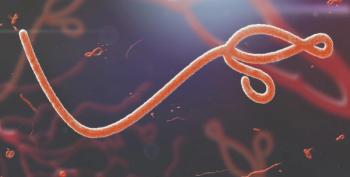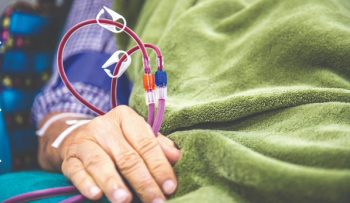
CDC’s Medical Advisor for the Healthcare Safety Network, Raymund Dantes, MD, MPH, reviews sepsis and what infection preventionists, epidemiologists, and other health care workers need to know.

CDC’s Medical Advisor for the Healthcare Safety Network, Raymund Dantes, MD, MPH, reviews sepsis and what infection preventionists, epidemiologists, and other health care workers need to know.

Long-term care facilities were once normally happier places, but COVID-19 changed the individuals working and living there. PPEs, testing, overwork, underpayment, and too many isolations have chased health care workers away and forced the facilities' population to plummet. Can anything be done?

The workshop included members of the public, academics, and representatives of the pharmaceutical industry to discuss development of new medicines for preventing HAIs and antibiotic resistance.

Prolonged catheter use is the number 1 risk factor for developing catheter-associated urinary tract infections (CAUTI). External urine collection devices are an alternative to indwelling catheters for managing urinary incontinence.

Take 5 minutes to catch up on Infection Control Today’s highlights for the week ending September 2.

Starting September first, the first of the autumn boosters began to be available, but individuals may be concerned about their efficacy and safety. Infection Control Today® looks at the data.

Despite the gap of the current and desired rate of COVID-19 vaccinations of pregnant individuals, the systematic review and meta-analysis of 10 observational studies show the vaccines are safe and effective.

Having complete IV start kits or central line insertion kits to reduce gel type variability and, thus gel contamination and following AIUM and INS disinfection recommendations are 2 ways to prevent health care-acquired infections.

Bug of the Month helps educate readers about existing and emerging pathogens of clinical importance in health care facilities today.

Infection Control Today's® Product Locator is a monthly column highlighting some of the latest advanced technology in the infection prevention field.

The purpose and function of a vascular access specialist team or trained individual may include the initial assessment and insertion and management of peripheral intravenous catheters, midlines, peripherally inserted central catheters, arterial catheters, and external and/or internal jugular, femoral, and subclavian catheters.

The smallest hospital patients need extra care to be protected from infectious disease. This article series examines the NICU from both a physician and infection preventionist perspective.

Programs seeking to implement advances in health care epidemiology must critically evaluate their impact on infection prevention processes, patient safety, and cost prior to wholesale adoption.

Sterile Processing Week runs from October 9 through 15. Julie Williamson, of the Healthcare Sterile Processing Association, explains why appreciation goes a long way with this vital group of hospital professionals.

You spend a great deal of time in your job telling individuals what you need them to do to prevent and control infections. They may hear you, but are they listening?

Take 5 minutes to catch up on Infection Control Today’s highlights for the week ending August 19.

Ambassador Deborah Birx, MD, told Infection Control Today® exclusively, “Every mistake that we made with COVID-19 in January and February of 2020, repeated in real time with monkeypox.”

Ambassador Deborah Birx said in an exclusive interview with ICT® that there are “extraordinary structural barriers in the US to access” medical care. Individuals may have insurance, but they cannot access care.

Last week the Centers for Disease Control and Prevention relaxed recommendations which neither control or prevent a rapidly evolving and disabling disease, COVID-19. However, we must maintain effective efforts to control spread of the virus.

Using an ultrasound transducer may look easy, but it is a highly specialized skill, and to use a transducer requires education, accountability, and competency checks to occur regularly.

The first day as an infection preventionist can be nerve wracking, but what happens when The Joint Commission is there the same day?

Take 5 minutes to catch up on Infection Control Today’s highlights for the week ending August 12.

Ambassador Deborah Birx, MD, infectious disease expert, and a former director at the Centers for Disease Control and Prevention, and Monica Gandhi, MD, MPH, weigh in on that agency's significantly changed quarantine and distancing guidelines.

Using ultrasound transducers is often necessary in the emergency department, but too often the proper procedures to protect against health care associated infections are not followed, and clinicians are worried.

Identified in at least 35 people in eastern China, a new type of henipavirus, Langya virus, is suspected to have infected shrews before jumping to humans.